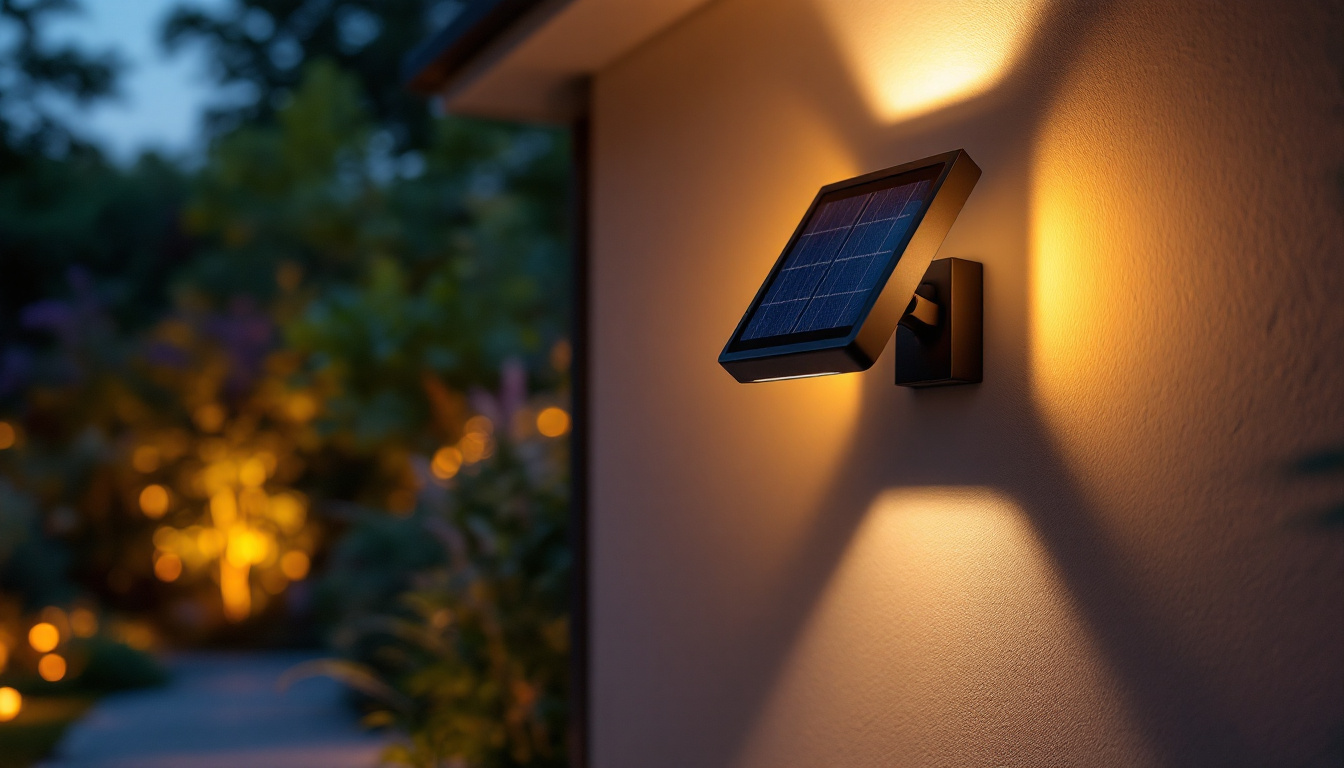
In the evolving landscape of lighting technology, ceiling mount motion sensors have emerged as a vital component for both residential and commercial applications. For lighting contractors, understanding the intricacies of these devices is essential to delivering effective and energy-efficient lighting solutions. This article delves into the functionality, installation, and benefits of ceiling mount motion sensors, equipping contractors with the knowledge needed to enhance their service offerings.
Ceiling mount motion sensors are devices designed to detect movement within a specified area and activate lighting accordingly. These sensors utilize various technologies to sense motion, including passive infrared (PIR), ultrasonic, and dual-tech methods. Each type has its own set of advantages and ideal applications.
When it comes to ceiling mount motion sensors, the choice of technology can significantly impact performance. Passive infrared sensors detect changes in heat emitted by objects, making them effective for areas with clear line-of-sight. Ultrasonic sensors, on the other hand, emit sound waves and detect motion based on the reflection of those waves. Dual-tech sensors combine both technologies, providing a more reliable solution in complex environments. For instance, in spaces with a lot of obstructions, such as furniture or partitions, dual-tech sensors can minimize false triggers and ensure that lighting is activated only when necessary.
Modern ceiling mount motion sensors come equipped with various features that enhance their functionality. Adjustable sensitivity and time delay settings allow contractors to customize the sensor’s performance based on the specific needs of a space. Additionally, many sensors include daylight harvesting capabilities, which adjust lighting levels based on the amount of natural light present, further improving energy efficiency. Some advanced models even offer remote control and integration with smart home systems, allowing users to monitor and manage their lighting from mobile devices or central control panels, thereby increasing convenience and adaptability in dynamic environments.
Ceiling mount motion sensors are versatile devices suitable for a range of applications. In commercial settings, they are often used in hallways, restrooms, and conference rooms to ensure lights are only on when needed. In residential environments, they can enhance security by illuminating driveways or entryways when motion is detected. Understanding these applications helps contractors recommend the right solutions to their clients. Beyond typical usage, these sensors can also be employed in warehouses and retail spaces to optimize energy consumption, ensuring that lights are activated only in areas where foot traffic is detected. This not only saves on energy costs but also contributes to a more sustainable operation by reducing unnecessary energy waste.
Proper installation of ceiling mount motion sensors is crucial for optimal performance. Lighting contractors should be familiar with the best practices to ensure that these devices function effectively and meet the needs of their clients.
The effectiveness of a motion sensor largely depends on its placement. Ideally, sensors should be installed in locations where they have an unobstructed view of the area they are monitoring. High ceilings may require specific mounting techniques to ensure adequate coverage. Additionally, contractors should consider the potential for false triggers caused by pets or moving objects. For instance, placing a sensor too close to windows or doors can lead to unnecessary activations due to passing cars or people outside. To mitigate this, it’s advisable to conduct a thorough site assessment before installation, taking note of potential interference factors such as heat sources, reflective surfaces, and the layout of furniture.
Wiring a ceiling mount motion sensor involves connecting it to the appropriate power source and ensuring compatibility with existing lighting systems. Contractors should follow manufacturer guidelines for wiring configurations and consider using low-voltage wiring for added safety. Furthermore, integrating sensors with smart lighting systems can enhance their functionality, allowing for remote control and monitoring. This integration not only streamlines the user experience but can also facilitate energy savings through programmable settings that adjust lighting based on occupancy patterns. Additionally, contractors should explore options for wireless connectivity, which can simplify installation and reduce the need for extensive wiring, making it a more flexible solution for various environments.
Once installed, testing and calibration are essential steps to ensure that the motion sensor operates as intended. This may involve adjusting sensitivity settings and performing walk tests to confirm that the sensor detects movement accurately. Proper calibration not only enhances performance but also helps in minimizing energy waste. During this phase, it is also beneficial to educate clients on how to adjust settings themselves, should their needs change over time. Providing a brief tutorial on the user interface and features can empower clients and lead to greater satisfaction with their motion sensor system. Furthermore, regular maintenance checks can be scheduled to ensure that the sensors remain in optimal condition, particularly in environments where dust or debris may accumulate and obstruct their functionality.
The integration of ceiling mount motion sensors offers numerous advantages for both contractors and clients. Understanding these benefits can aid in promoting their value during consultations and installations.
One of the most significant benefits of ceiling mount motion sensors is their ability to enhance energy efficiency. By ensuring that lights are only activated when needed, these sensors can lead to substantial energy savings over time. This is particularly beneficial in commercial settings, where lighting costs can be a significant portion of the overall energy bill. Moreover, the reduction in energy consumption not only lowers utility expenses but also contributes to a smaller carbon footprint, aligning with the growing emphasis on sustainability in both residential and commercial projects.
Ceiling mount motion sensors also play a crucial role in enhancing security. By illuminating areas when motion is detected, they deter potential intruders and provide peace of mind for homeowners and business owners alike. This added layer of security can be a selling point for contractors looking to offer comprehensive lighting solutions. Additionally, many modern sensors can be integrated with security systems, sending alerts to homeowners or security personnel when unexpected movement is detected, thus providing an extra layer of protection and responsiveness that is invaluable in today’s security-conscious environment.
In addition to energy savings and security, ceiling mount motion sensors provide convenience and comfort. They eliminate the need for manual light switches, allowing occupants to move freely without worrying about turning lights on and off. This is particularly advantageous in spaces like hallways or storage areas, where hands may be full or where frequent movement is expected. Furthermore, the automatic nature of these sensors can improve the overall user experience, especially in environments where accessibility is a priority, such as in facilities catering to the elderly or disabled. The seamless operation of lighting can significantly enhance the functionality and usability of a space, making it more inviting and user-friendly.
Ceiling mount motion sensors are incredibly versatile and can be utilized in a variety of settings beyond just residential and commercial spaces. For instance, they are increasingly being adopted in industrial environments to monitor large warehouses or manufacturing floors, where the movement of personnel and equipment can be frequent and unpredictable. By strategically placing these sensors, businesses can ensure that lighting is optimized for safety and efficiency, reducing the risk of accidents in poorly lit areas. Additionally, their adaptability allows for integration with smart home systems, enabling users to control lighting remotely or set specific parameters for when lights should activate, further enhancing the functionality of modern living spaces.
While ceiling mount motion sensors offer numerous benefits, there are challenges and considerations that lighting contractors must keep in mind when recommending and installing these devices.
One common issue with motion sensors is the potential for false triggers, which can lead to unnecessary energy consumption. Factors such as pets, moving objects, or even changes in temperature can cause sensors to activate unexpectedly. Contractors should educate clients on the importance of proper placement and calibration to minimize these occurrences.
Another consideration is the compatibility of motion sensors with existing lighting systems. Not all sensors work seamlessly with every type of lighting, so it’s crucial for contractors to verify compatibility before installation. This may involve consulting with manufacturers or conducting tests to ensure that the sensor integrates smoothly with the current setup.
Educating clients about the features and benefits of ceiling mount motion sensors is essential for successful installations. Contractors should take the time to explain how the sensors work, how to adjust settings, and the best practices for maintenance. This not only ensures client satisfaction but also fosters trust and credibility in the contractor’s expertise.
The field of motion sensor technology is continually evolving, with new advancements on the horizon. Staying informed about these trends can help lighting contractors remain competitive and offer cutting-edge solutions to their clients.
As smart home technology becomes increasingly popular, the integration of motion sensors with smart home systems is a growing trend. This allows for enhanced control and monitoring of lighting, enabling users to adjust settings remotely through smartphones or voice-activated devices. Contractors should consider recommending smart motion sensors that offer these capabilities to meet the demands of tech-savvy clients.
Advancements in sensor technology are also paving the way for more reliable and efficient devices. Newer models may feature improved algorithms that enhance motion detection accuracy, reducing the likelihood of false triggers. Additionally, energy harvesting technologies are being explored, allowing sensors to operate without traditional power sources, further increasing their appeal.
With a growing emphasis on sustainability, the demand for energy-efficient lighting solutions will continue to rise. Ceiling mount motion sensors align perfectly with this trend, offering a practical way to reduce energy consumption. Contractors can position themselves as leaders in sustainable lighting solutions by promoting the use of these sensors in their projects.
Ceiling mount motion sensors represent a valuable addition to the lighting contractor’s toolkit. By understanding their functionality, installation best practices, and the benefits they offer, contractors can provide clients with innovative lighting solutions that enhance energy efficiency, security, and convenience. Staying abreast of industry trends and advancements will further empower contractors to meet the evolving needs of their clients, ensuring successful installations and satisfied customers.
Ready to enhance your lighting projects with the latest ceiling mount motion sensors? Look no further than LumenWholesale for all your lighting needs. We provide contractors with high-quality, specification-grade lighting products at unbeatable wholesale prices. Our selection of motion sensors meets the highest industry standards, ensuring you deliver reliable and efficient lighting solutions to your clients. Plus, with free shipping on bulk orders, you can stock up on premium lighting without worrying about hidden fees or inflated markups. Elevate your lighting game with the perfect blend of quality, affordability, and convenience at LumenWholesale – Wholesale Lighting at the Best Value.

Discover the essential insights lighting contractors need to master architectural lighting.

Discover the must-have tools and resources for lighting contractors in our comprehensive guide to light bulb distributors.

Discover essential tips in our Standard Outlet Wiring guide for lighting contractors.

Discover why lighting contractors should prioritize outdoor solar lighting wall mounts.